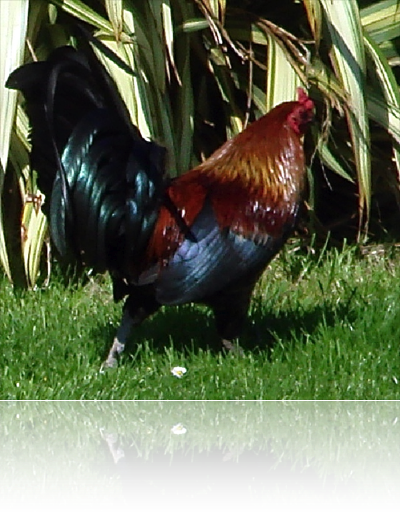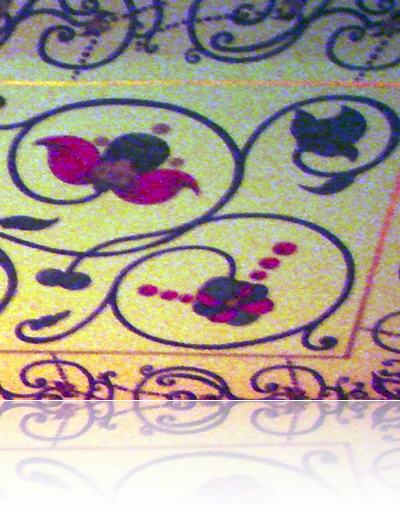see nerd)
2009c
brits elect racists
The BNP claim not to be racist, but here they are, being racist. 10.6.9 |
unforgivable
There’s a complication. There are many versions of this EP. Most share tracks. I suspect it’s a mix album under construction, given mixes keep appearing. No doubt those noted will gain siblings. C’est la vin. Unforgivable (Extended Mix) is a fruity white with a dark edge. The words provide the jealous darkness on smooth trance, perhaps a Gewurztraminer. But the music’s sweet sense is false security, the harmonies add their own blood glamour. This is a wine with acidity, one opened too young. Last year’s Gewurztraminer from the MacLeod vineyard in Ullapool is a good choice. The First State Rough Mix is a powerful piece with broken edges. The first ninety seconds take you far away, then the music lets you down. It’s far too young … but the track name says this, so it’s no problem. This is a youthful red that needs to be drunk now because it won’t age well. That describes a tourist plonk, so I’ve chosen the Bonnie Prince Charlie, a beaujolais style red from the Flora MacDonald vineyard on Skye. The First State Smooth Mix looks a light red, but one taste and you discover substantial body, a good combination of interesting flavours. The mix works a treat, so the wine should too. The obvious choice is Papa’s Number Nine from Rifkind’s Edinburgh vineyard, a solid Rhone Valley style red that delivers. As they have great fun pointing out, it isn’t Chateauneuf du Pape, but it’s just as tasty, and just as available in Aldi. The Stoneface & Terminal Dub Mix starts corked, then drags, before recovering pace. Once the music gets going, it works well. Do sequencers have mornings after the night before? Anyway, this piece needs a session wine. The mix has dark character, but the session drink must be weak enough for all night drinking without knocking you over. I suggest a light white, the Pinot Gringo from the new Gorbals vineyard run by the Mexican immigrant and vinter extraordinaire, Plutarco Calles. The EP finishes with the Stoneface & Terminal Vocal Mix, & I’ve had four bottles of good wine. Unsurprisingly, I’m drunk. The music quickly takes me into a trance, despite tripping over shoelaces. The wine for the mix is too good to be drunk when drunk, but ,WTF, the music deserves it. I’ve chosen Sinclair’s C5, a Côte du Rhone style red from Scotland’s most northerly mainland vineyard in Wick. The EP isn’t something you’ll reminisce over in your seventies, but it’s worthy of good bottle. If you can’t get a difficult-to-find Scottish wine, and want a good choice, try that Aldi young Chateauneuf du Pape. It’s a good red and a good excuse. 1.6.9 |
the gimp
Let me start off my emphasising the positive. The Gimp is a free for use program with immense power, and it can do many many things. But the user interface just doesn’t work properly. You can do those many many things, but not easily. Let me give you an example that I’ve just faced. I have a draft cover page. It has some text on it, in the wrong place. I want to move that text to the correct place. I started off by deciding to select the area I wanted to move. So I used the rectangle selection tool to select it. Then I moved the selected area. It just moved the selection box, not the contents. Ok, fine, I thought, that doesn’t work as expected, but it makes sense. So I looked in the menu, and spotted a move command. Aha, I thought. So, having made the selection, I chose move, then attempted to move the selected area. Now this is the Gump’s first almighty fuck up. This move didn’t move the selected area, it moved the entire image. The move command completely ignored the selection, even to the extent of leaving the selection box where it was. If I wanted to move the entire image, I wouldn’t have selected a part of it first. Good God! Now the Gimp, like many similar programmers, suffers from an abortion called layers. This concept stinks of ignoring the capabilities of computer user interfaces, and pandering to how things were done before computers were invented. I have never come across a positive benefit to layers. I have often come across them getting in the way. So you can see why I thought: perhaps this is a layer thing. So I tried the Duplicate Layer comment to duplicate my selection into a new layer. Guess what: it ignored my selection and duplicated the entire image. If I wanted to duplicate the entire image, I wouldn’t have selected a part of it first. Again, Good God! Now, it turns out the command to convert the selection into a layer is actually Select Float. Yup, the command to create a layer is not in the Layer menu. So, a process that should be select something and drag it turns out to be select something, then say you want to drag it, then actually drag it, then say you’ve dragged it. That last command, incidentally, is in the Layer menu, a completely different menu to Select Float. There’s two utterly pointless additional commands which aren’t even related to each other to say something you have to say that shouldn’t need saying. WTF?! I will give the Gimp, this stupidity of layers is not the Gimp’s concept, it’s something stolen from another badly designed program (it must be badly designed because it’s got layers in it). I suspect, though, the Gimp’s clunky menu layout is entirely its own innovation. I do wish Open Source software would innovate the user interface, not just copy a commercial concept badly. I suspect this is a generic problem because Open Office, a product completely independent to the Gimp, has exactly the same problem: adequately implemented poorly assembled concepts behind a badly flawed user interface. Now I must emphasise something: the Gimp is free. It is one hell of a lot better than nothing. It can do a great deal, it is a powerful product, it should be on the computer of everyone interested in images. But this does not mean it’s perfect. Not at all. For those of you who quite rightly say: if you don’t like it, contribute, fix it; I’ll just point out I make my own, quite different, creative commons contributions. For those of who who say if you want a good product you’ll have to pay for it, I’ll say Microsoft Office: very sleek, very pretty, full of fundamental design flaws. Why should I believe a commercial image program is significantly better than the Gimp? Indeed, when Paint Shop Pro went commercial, it got noticeably worse. From my experience, the worthwhile commercial image programs are the specialist ones designed by people who love their subject, e.g. Studio Artist. An exception to that general rule is Apple’s Aperture, although that’s a photography program, not an image program. 31.5.9 |
the irish taxman
Recently, the Irish taxman wrote to me and said, oops, you’ve paid too much tax. “Oh God”, I thought, “here we go again”. Well, I was totally wrong. The cheque was in the very next letter. That’s a very pleasant difference of attitude. Oh, and yes, many years later, I got sweet revenge on the British taxman, revenge they themselves invoked. 15.5.9 |
busy busy buzz buzz
11.5.9 |
the problem with recovery by export
A strategy also mentioned is to innovate out of recession. Unfortunately, innovation requires investment. This recession follows the credit crunch; fewer banks are willing, or able, to loan. Fortunately, not all investment is frozen, not all innovation requires investment. For example, I’m considering funding myself to build a software product. I’ll have to move somewhere cheap to live to avoid external support. I’ll spend the next few months researching. 14.4.9 |
the puritan uk
Since I left the UK, the police have started raiding parliamentarians who discomfort them. This, also, is evidence of descent towards a police state. Most continental countries treat people as though they’re citizens, not as though they’re prospective criminals. If people are treated as prospective criminals, idiotic laws can easily be introduced to make them into the real thing. And this is what’s happening. The Register has an interesting article showing how the UK government, which pretends to base its anti-sexuality laws on evidence, actually manufactures the evidence to fit its desired result. ‘When it comes to sex and censorship, Government’s insistence that laws are "evidence-based" is little more than hot air. The statistics quoted in support of any given case are frequently misleading, partial, and - according to one expert in this field - subject to highly unethical collusion of interest between government and researchers. From rape to lap-dancing, from internet harm to obscure sexual practices, "evidence" is used to back a narrow politicised agenda, rather than as a basis from which to develop policy.’ ‘The other way in which government manages to skew evidence for its policies is in the careful selection of the criteria it sets out to measure. Following on from an original assertion that there was no evidence for harm resulting from extreme porn, it put in place a Rapid Evidence Assessment which quickly concluded that after all, there might be some evidence. This report has been widely criticised, not least on the grounds of the assumed bias of its authors. However, a far more serious criticism of this work is that it was scoped to report only on evidence for harm. According to the Royal Society for Prevention of Accidents, Christmas trees, household linen, and underwear are all associated with some degree of harm. So should we ban underwear?’ Laws are being introduced based on plain and simple prudish bigotry justified by corrupted research. Laws are being introduced to criminalise people born with a particular birthright. Bigotry based on sexuality is not that far off bigotry based on skin colour; they’re both based on fear of difference, a difference of birthright. These are laws based on cowardice, based on fear. Their introduction shows a country moving further into excessive authoritarianism. It doesn’t surprise me the UK government’s been caught out fixing the evidence to support their position; remember the nonsense about 45 minute Iraqi missiles? It doesn’t surprise me that prudes fix evidence to support their puritanical nonsense; life is never as simple as they pretend. Combining the two together creates repressive laws. The UK is continuing its descent into a police state. It’s nothing new, of course; the UK desperately needs a liberal (notice the small ’L’) government to get rid of a century of authoritarian crap. 12.4.9 |
ego google boo
If I had a number one frequent name, I’d be immensely satisfied. All it took my rarer name was web presence and persistence. Still, I feel the chuff. As a kid living outside Wales, my personal name was unusual. No other kids shared it. The great poet made it known. The BBC kept it alive. The American singer, another brilliant wordsmith, he spread it. Now it’s common, even the full name. Ignoring an acrobatic cat in Croydon, I met no one with my name until my 30s. The first time was startling. For a moment, that other person was me, had stolen myself away from me. It took a few seconds for that reaction to feel silly, but years for the disquiet of losing the uniqueness to fade. So I’ve no justification for my google ego boo. But all the same … :-) . 4.4.9 |
|
|
 The core of BNP politics:
The core of BNP politics:
 Music reviews too often ignore the wine to be drunk when listening. Having just returned from a tour of Scottish vineyards, I found myself asked to review
Music reviews too often ignore the wine to be drunk when listening. Having just returned from a tour of Scottish vineyards, I found myself asked to review  I’ve had a deserved go at Microsoft’s Word in the past, and its open source imitators. Now it’s the turn of
I’ve had a deserved go at Microsoft’s Word in the past, and its open source imitators. Now it’s the turn of  Many years ago, the British taxman took three grand of redundancy money from me. They’d made a mistake, they took the money, they admitted they’d made a mistake. But it took them three years, yes, three whole damn years, to give me back my own redundancy payout. All I got when I tried to get my own wrongly taken money was silence; my letters were ignored. I *still* haven’t received the interest.
Many years ago, the British taxman took three grand of redundancy money from me. They’d made a mistake, they took the money, they admitted they’d made a mistake. But it took them three years, yes, three whole damn years, to give me back my own redundancy payout. All I got when I tried to get my own wrongly taken money was silence; my letters were ignored. I *still* haven’t received the interest.
 … moved across Dublin into a small (temporary?) flat … kitties rehomed … seen Star Trek reboot … Wurm fest will happen (but not as we knew it) … poetry collection en route … and … and … and ….
… moved across Dublin into a small (temporary?) flat … kitties rehomed … seen Star Trek reboot … Wurm fest will happen (but not as we knew it) … poetry collection en route … and … and … and ….
 Many countries plan to export out of recession. Unfortunately, this is a global recession. If most countries try to increase exports, and reduce imports, where do they export to? Countries not following this strategy are those already exporting; what are they supposed to do, switch to importing?
Many countries plan to export out of recession. Unfortunately, this is a global recession. If most countries try to increase exports, and reduce imports, where do they export to? Countries not following this strategy are those already exporting; what are they supposed to do, switch to importing?
 The UK is not a relaxed society. I relaxed when I left, and after a while I realised it was because I wasn’t constantly being watched. I am not comfortable with the continuous surveillance, the officious paranoia. I don’t want some fucking camera watch me scratch my bottom. This is mass generation of
The UK is not a relaxed society. I relaxed when I left, and after a while I realised it was because I wasn’t constantly being watched. I am not comfortable with the continuous surveillance, the officious paranoia. I don’t want some fucking camera watch me scratch my bottom. This is mass generation of  Type my name, unquoted, into Google. My site, my public face, is number one. It’s true for Yahoo and Live too. The algorithms are being nice today.
Type my name, unquoted, into Google. My site, my public face, is number one. It’s true for Yahoo and Live too. The algorithms are being nice today.
